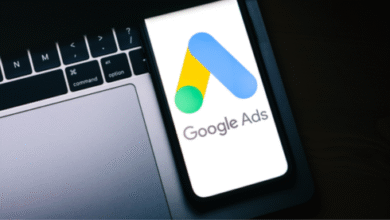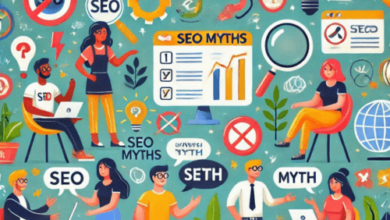Digital Marketing Services for Small Business: Investment or Necessity in 2025?

In the ever-evolving digital landscape of 2025, small businesses face a critical decision: should they view digital marketing services for small business as an optional investment or a necessary operational expense? With online consumer behavior shifting rapidly and competition intensifying, this article explores why digital marketing is not just a smart move—but a vital strategy for long-term growth and sustainability.
The Digital First World: Where Your Customers Live
Today, most customer journeys begin online. Whether someone is searching for a local coffee shop, comparing products, or checking reviews, digital touchpoints have become indispensable. In 2025, consumers expect businesses—large or small—to have an online presence that is not only visible but also engaging and trustworthy.
For example, a small bakery in Austin that maintains a Google Business Profile, runs local SEO, and showcases new menu items on Instagram will attract more foot traffic than one relying solely on word-of-mouth. To meet customers where they are, small businesses must invest in digital tools such as websites, search engine visibility, and social media outreach.
How to execute: Start by identifying where your customers spend time online. Use Google Analytics and customer surveys to pinpoint platforms. Then, prioritize those channels by optimizing your website, setting up social profiles, and ensuring local directory listings are up to date.
SEO: The Cornerstone of Organic Visibility
Search Engine Optimization (SEO) remains a foundational pillar in digital marketing. For small businesses, local SEO services is especially crucial. When optimized correctly, it can drive significant traffic to your site without recurring advertising costs.
Take, for instance, a dental clinic in a suburban town. By optimizing their site for local keywords like “family dentist in Springfield,” and earning backlinks from local blogs or directories, they can dominate local search results. This ongoing visibility translates to steady client inquiries over time.
How to execute: Begin by conducting keyword research with tools like Google Keyword Planner or Ubersuggest. Focus on long-tail, location-based phrases. Next, optimize meta titles, descriptions, and on-page content. Finally, set up and regularly update your Google Business Profile, and encourage customer reviews to enhance trust and rankings.
Paid Advertising: A Short-Term Boost with Long-Term Benefits
While SEO builds over time, paid ads offer immediate visibility. Platforms like Google Ads and Meta Ads (Facebook/Instagram) allow businesses to target specific demographics, interests, and geographic areas.
A small home cleaning service can use Facebook Ads to target busy professionals within a 10-mile radius. A compelling ad with a special promotion (“First clean 25% off!”) can drive rapid conversions and establish repeat customers. Paid advertising also allows for granular performance tracking, making it easier to adjust strategies based on ROI.
How to execute: Set a monthly budget and choose the right ad platform based on your audience. Create multiple versions of your ad with different images and messages. Use A/B testing to evaluate performance, and optimize regularly based on cost-per-click (CPC) and conversion metrics.
Content Marketing: Building Authority and Trust
Content marketing involves creating and sharing valuable information to attract and retain a clearly defined audience. This includes blogs, videos, infographics, podcasts, and more. In 2025, consumers are more selective with who they trust—and consistent content is key to earning that trust.
A pet grooming salon could publish blog posts like “5 Ways to Keep Your Dog’s Coat Healthy in Winter” or post TikTok videos of grooming transformations. Not only does this build credibility, but it also increases website traffic and social media engagement.
How to execute: Develop a monthly content calendar based on common customer questions or seasonal trends. Use SEO tools to align content with search demand. Distribute your content through blogs, email newsletters, and social media. Track engagement metrics to refine your approach over time.
Email Marketing: Personalization That Converts
Despite the rise of new platforms, email marketing continues to offer one of the highest ROIs in digital marketing. For small businesses, personalized email campaigns can foster customer loyalty and drive repeat purchases.
Imagine a boutique clothing store sending an email to previous customers featuring new arrivals, a loyalty discount, or styling tips. When tailored to customer preferences, these emails feel less like promotions and more like helpful suggestions.
How to execute: Use email marketing platforms like Mailchimp or Klaviyo to build subscriber lists and segment audiences. Create welcome sequences, promotional blasts, and re-engagement campaigns. Use clear subject lines, attractive visuals, and strong calls-to-action (CTAs) to boost open and click-through rates.
Social Media Engagement: Humanizing the Brand
In 2025, social media is not just for exposure—it’s for connection. Brands that actively engage with their audiences build loyalty and visibility. Platforms like TikTok, Instagram Reels, and YouTube Shorts are especially powerful for storytelling and product showcases.
Consider a small candle-making business that posts behind-the-scenes clips, customer testimonials, and DIY gift-wrapping ideas. By showcasing authenticity and responsiveness, they build an emotional connection that drives long-term loyalty.
How to execute: Choose 1–2 platforms based on where your audience is most active. Post consistently using a mix of content types (educational, promotional, behind-the-scenes). Engage with followers by replying to comments and DMs. Use hashtags and trends strategically to increase reach.
Analytics and Adaptability: The Feedback Loop for Growth
Data is the lifeblood of any digital marketing campaign. Tracking your performance helps you understand what’s working and what’s not—enabling smarter budget allocation and strategy refinement.
For example, a landscaping business might notice that email campaigns generate more leads than Instagram posts. Armed with this insight, they can reallocate time and money toward optimizing their email content.
How to execute: Set up Google Analytics, Facebook Pixel, and email platform dashboards to monitor KPIs like traffic, conversions, CTRs, and bounce rates. Review reports weekly or monthly and use the data to tweak campaigns, adjust messaging, or pause underperforming ads.
In conclusion, digital marketing services in 2025 are no longer a luxury or a “nice-to-have”—they are essential. As the digital ecosystem becomes more sophisticated, small businesses must proactively embrace digital marketing to stay competitive, connect with their audience, and drive sustainable growth. It’s not just an investment. It’s a necessity.
Would you like a visual infographic or downloadable checklist summarizing these steps?




